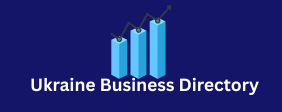At the cradle of tight social media communication are guidelines. These frameworks form a reference work for you and your employees to keep the communication consistent and unambiguous. In them you describe everything: your target groups, your tone of voice and your approach per channel. The latter is also very important: too often companies simply place the same message on as many channels as possible, in the hope that it will catch on somewhere. It is better to focus on the channels that are most valuable to you and to expand your presence there, than to hardly get any interaction on 20 platforms.
Also read: Managing your
In the guidelines you also write down your three to five content themes. This brings focus and makes it clear to the target group which recent mobile phone number datathemes your brand finds important. This way you charge your brand and clearly show what your company stands for and how you help your target groups. For example, companies can communicate within themes such as ‘own projects’, ‘sustainability’ or ‘innovations’.
Content Calendar
After establishing the framework, it is time to get down to the real work. Based on the strategy, you determine where and how often to publish and what topics this will be about. You create the framework for a content calendar. In the content calendar, you divide the themes into sub-themes, which ultimately lead to posts. It also clearly states for which target group(s) the content is written and who is responsible for which part of the content creation process. A good, living content calendar leaves room for spontaneous additions, but also provides a schedule. Clear, fixed post dates and times within defined themes is what we want, and no ‘random’ posts or content-free periods. Just ask any influencer: regularity and predictability ultimately ensure the best bond. A surprise is only sometimes appropriate.
. Setting up channels
Now that you have the content calendar, prepare the selected channels. A consistent experience is also important here, so use the same images and descriptions for different channels, but adjust them slightly to the target group. After all, you reach different target groups on Facebook than on LinkedIn and a different tone of voice is also appropriate for this. australia database directory During the interviews with the target group, you have found out which channels they are on the most. Using a communication model, such as Touch, Tell, Sell, Service below, you draw the communication journey of your target group.
LinkedIn Ads: predictive audiences as an alternative to lookalike audiences
Do you want more visibility on social media? Learn in the online mastercourse how AI can help you. Register
On this year’s leap day, LinkedIn is saying goodbye to a familiar service: lookalike audiences . For many who have relied on this feature the added value of a well-thought-out content strategy for audience targeting, this announcement raises questions about the future of their B2B marketing strategy. Fear not. For LinkedIn optimization, predictive audiences are the alternative to lookalike audiences. In this article, I’ll dive into the new rules of audience targeting.
